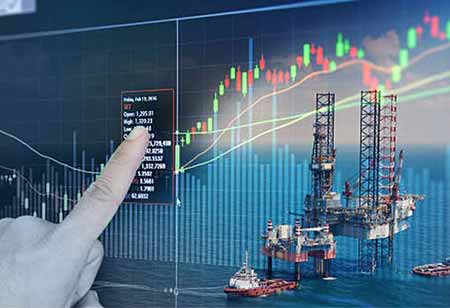Thank you for Subscribing to Energy Business Review Weekly Brief
Bioenergy with carbon capture and storage (BECCS)
Bioenergy with carbon capture and storage (BECCS) is the process of capturing and permanently storing carbon dioxide (CO2) from biomass (organic matter) energy generation.

By
Energy Business Review | Wednesday, October 12, 2022
Stay ahead of the industry with exclusive feature stories on the top companies, expert insights and the latest news delivered straight to your inbox. Subscribe today.
BECCS has a major role in combating climate change.
FREMONT, CA: Bioenergy with carbon capture and storage (BECCS) is the process of capturing and permanently storing carbon dioxide (CO2) from biomass (organic matter) energy generation.
Importance Of BECCS for decarbonization: Sustainably sourced bioenergy (biomass-generated energy) can be carbon neutral, as plants absorb CO2 from the atmosphere as they grow. This, alternately, offsets CO2 emissions discharged when the biomass is combusted as fuel.
When sustainable bioenergy is connected with carbon capture and storage, it turns into a source of negative emissions, as CO2 is permanently eliminated from the carbon cycle.
Experts think that negative emissions technologies (NETs) are crucial to helping countries meet the long-term goals of the Paris Climate Agreement. Therefore, BECCS has a major role in combating climate change.
How is the bioenergy for BECCS generated?
Most bioenergy is produced by burning biomass as a fuel in boilers or furnaces to produce high-pressure steam that drives electricity-generating turbines. Instead, bioenergy generation can utilize a wide range of organic materials, including crops planted and grown for the purpose and residues from agriculture, forestry and wood products industries.
Energy-dense forms of biomass, like compressed wood pellets, allowing bioenergy to be generated on a much larger scale. Fuels such as wood pellets can also be utilized as a substitute for coal in present power stations.
How is the carbon captured?
BECCS utilizes a post-combustion carbon capture process, where solvents isolate CO2 from the flue gases produced when the biomass is combusted. The captured CO2 is pressurized and turned into a liquid-like substance so it can then be transported by pipeline.
How is the carbon stored?
Captured CO2 can be safely and continually injected into naturally occurring porous rock formations, for instance, unused natural gas reservoirs, coal beds that can’t be mined, or saline aquifers (water-permeable rocks saturated with salt water). This process is called sequestration.
After a while, the sequestered CO2 may react with the minerals, locking it chemically into the surrounding rock through mineral storage.
Is BECCS sustainable?
Bioenergy can be generated from various biomass sources ranging from agricultural by-products to forestry residues to organic municipal waste. During their lives, plants absorb CO2 from the environment. This balances out the CO2 that is released when the biomass is incinerated.
What’s important is that the biomass is sustainably sourced, be it from agriculture or forest waste. Responsibly managed biomass sources are those which naturally regenerate or are replanted and regrown, where there’s an increase of carbon stored in the land and the natural environment is protected from harm.
For example, biomass wood pellets used as bioenergy in the UK are only sustainable when the forests they are sourced from continue growing. Sourcing decisions must be according to science and not adversely impact the long-term potential of forests to store and sequester carbon.
Biomass pellets can make a sustainable market for forestry products. Encouraging reforestation and afforestation – leading to even more CO2 being absorbed from the atmosphere.






